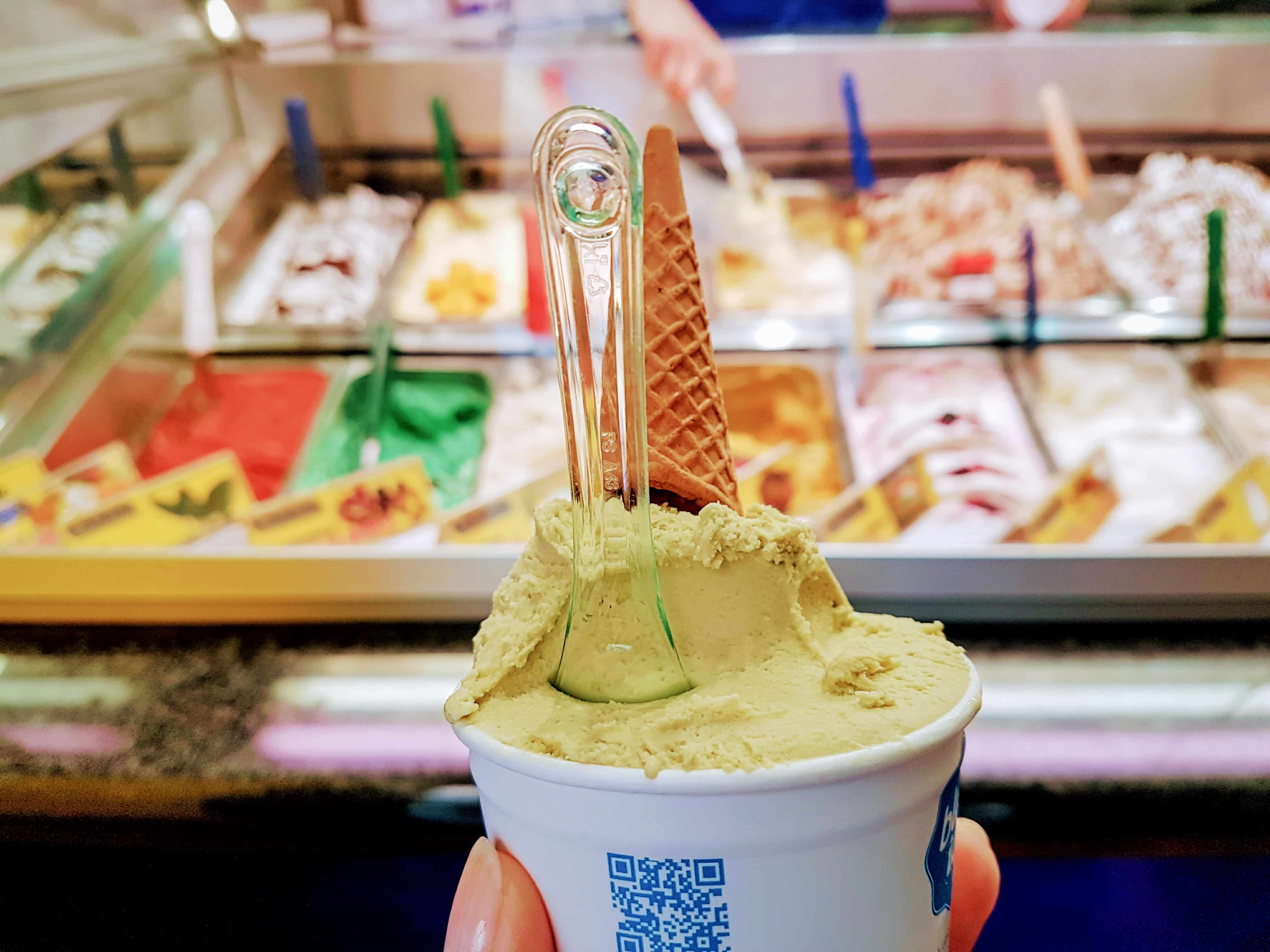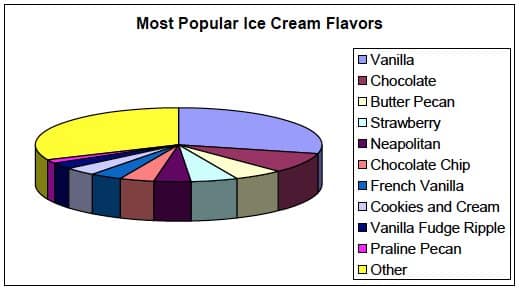NAICS Code: 722213 SIC Code: 5812
By: Sarah Barrette
I scream, you scream, we all scream for ice cream. Doesn’t that bring back good memories of your childhood and those hot summer days? That well-known tradition continues, according to the figures from the International Ice Cream Association reveals 90% of United States households consume ice cream and over 1.4 billion gallons were produced in 2003. Calculate that out and it translates to 20 quarts of ice cream per person. Just imagine all the ice cream headaches! But, you cannot let that fool you into thinking the industry is growing. The ice cream industry has reached a mature stage. Growth in the market comes from dollar sales rather than volume sales. Consumers are not eating more ice cream, but they are spending more to get it due to price increases for key ingredients.
Industry Trends
Demographics
Currently, children drive the ice cream industry in a large part. The U.S. Census Bureau is estimating that the youth populations in the next seven years will be declining, thus, forcing ice cream manufacturers to develop new products that are attractive to the growing adult population. Households with children are the lead consumers of ice cream with 34% of total consumption. This is compared to the 20% of household consumption without children.
The preferences of consumers vary according to age and gender. Consumer research has shown that children and African-American households eat more types of ice cream products and also consume more servings during a 30-day period. As the children enter their teenage years, they began to vary in their consumption. Teen girls start to begin to eat healthier and opt for the frozen yogurt, while teen boys still love the premium ice cream. Those habits that are formed while teenagers tend to stick with them as they mature into adulthood. The majority of adults prefer the same few flavors that they have eaten their whole life. Research findings show that these adults feel that the large variety of ice cream in the market today is appealing to the children, not adults.
When talking about brand names of ice cream parlors, consumers aged 18-24 prefer to eat at ice cream shops such as Ben & Jerry’s. The brand of ice cream clearly is more important to female consumers over the age of 45 and African-Americans and Hispanics.
Flavors
When it comes to staying current in the food service market, you must be prepared to offer “healthy” ice cream to your customers. While the majority of sales have been regular ice cream products, stores are being to diversify their lines in order to fit into various lifestyles. Many companies have introduced and are marketing ice cream that has a lower carbohydrate content to meet the demand for the newest diet craze. Customers are also now able to find reduced-fat, fat-free, and no sugar added varieties at many local ice cream parlors.
The newest trend in the ice cream industry is the mix-in or “create your own” craze. Consumers are looking at indulging themselves when they go out for ice cream. They are looking for an environment that caters specifically to them, while making them feel special at the same time. Instead of going to the grocery store, customers customize their ice cream experience selecting specific types of ice cream in an ice cream shop, order a specific flavor and then, add things to it. Candy bars, gummi bears, cookies, brownies, and fruit are the typical add-ins that you see in most stores. The shop then mixes the creation together and spices it up with toppings.
Ice cream shops are also beginning to make more ice cream on site rather than buying it from a supplier. Freshly made ice cream is a huge draw to customers. Customers can taste the difference in old vs. new ice cream and also in the different ingredients that may be used. They are looking to eat a higher quality product that is fresh and made specifically with them in mind.
Marketing
There are many ways to market an ice cream parlor, but local advertising has proven to be the most common and powerful. Locally advertising your shop is beneficial in reaching your target market and also cost-effective. Local advertising includes, but is not limited to: direct mailings, coupons, billboards, and bus shelters.
One way to draw customers into your shop is to offer “Buy One, Get One Free” coupons from the local newspapers, direct mailings, or the Internet. Consumers are drawn to places where things are advertised as being “Free”. Coupons are an easy way to determine just how affective your advertising message is in the community. Then, once the consumer has entered the ice cream shop, you can try to sell your other products to them as well. Also, with coupons, consumers are more likely to bring their family or friends along with them when they redeem it, so your store awareness increases.
Another popular program that is growing among ice cream parlors is the use of loyalty programs. Most ice cream shops that offer them, base their program similarly to sandwich shop frequent meal plan or a set amount of visits; at which time, customers receive a bonus or freebie. This program can be extremely effective in the ice cream market. It encourages customers to come back to your store each time they have a craving for ice cream because they are trying to reach their free reward at the end. It is suggested that the number of visits required before the end reward be kept small.
You do not have to limit your advertising to just local media. You can expand and also reach a regional and/or national audience. For these types of media, it is not cost effective for small businesses starting out to advertise using these methods.
Sources:
“Ice Cream Market Facing a Cold Reality,” by Don Montuori. Packaged Foods, Accessed online November 18, 2004.
https://www.packagedfacts.com/editor/viewcontent.asp?prid=440
“Just The Facts: Ice Cream Sales and Trends,” International Dairy Foods Association, June, 2004. Accessed online November 18, 2004.
https://www.idfa.org/facts/icmonth/page2.cfm
“How To Advertise an Ice Cream Franchise” Ice Cream Profits, Accessed on November 18, 2004.
“Ice Cream: New flavors, new trends, and the truth about the “ice cream headache”,” Supermarket Guru, July 19, 2003. Accessed online November 18,2004.
https://www.supermarketguru.com/page.cfm/2184
https://www.findarticles.com/p/articles/mi_m3289/is_4_173/ai_115490578
What’s Hot: Ice Cream, “ by Devlin Smith, Entrepreneur, August 25, 2003. Accessed online November 23, 2004.
https://www.entrepreneur.com/article/0,4621,310670,00.html
Photo by Michel Stockman on Unsplash







